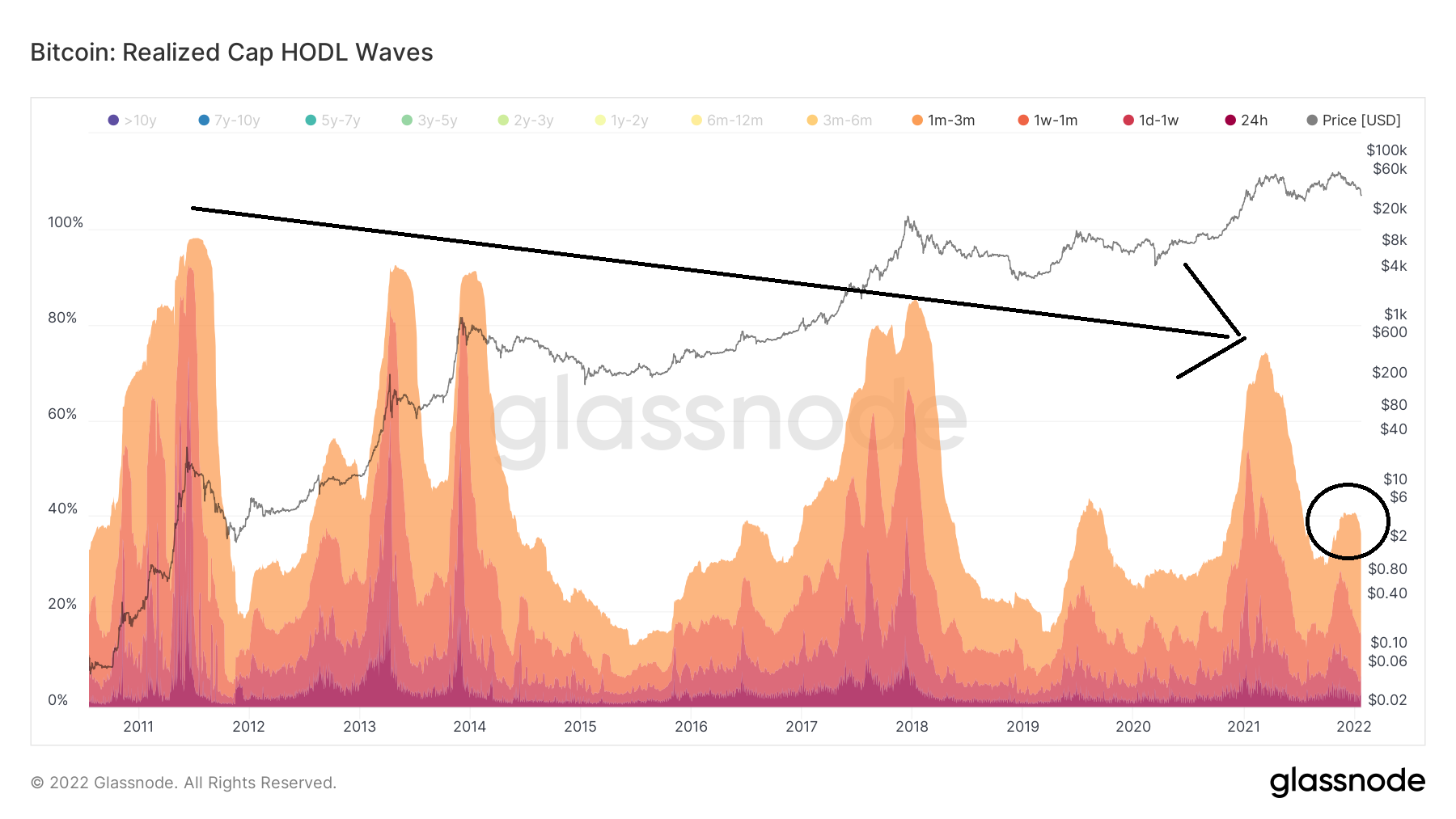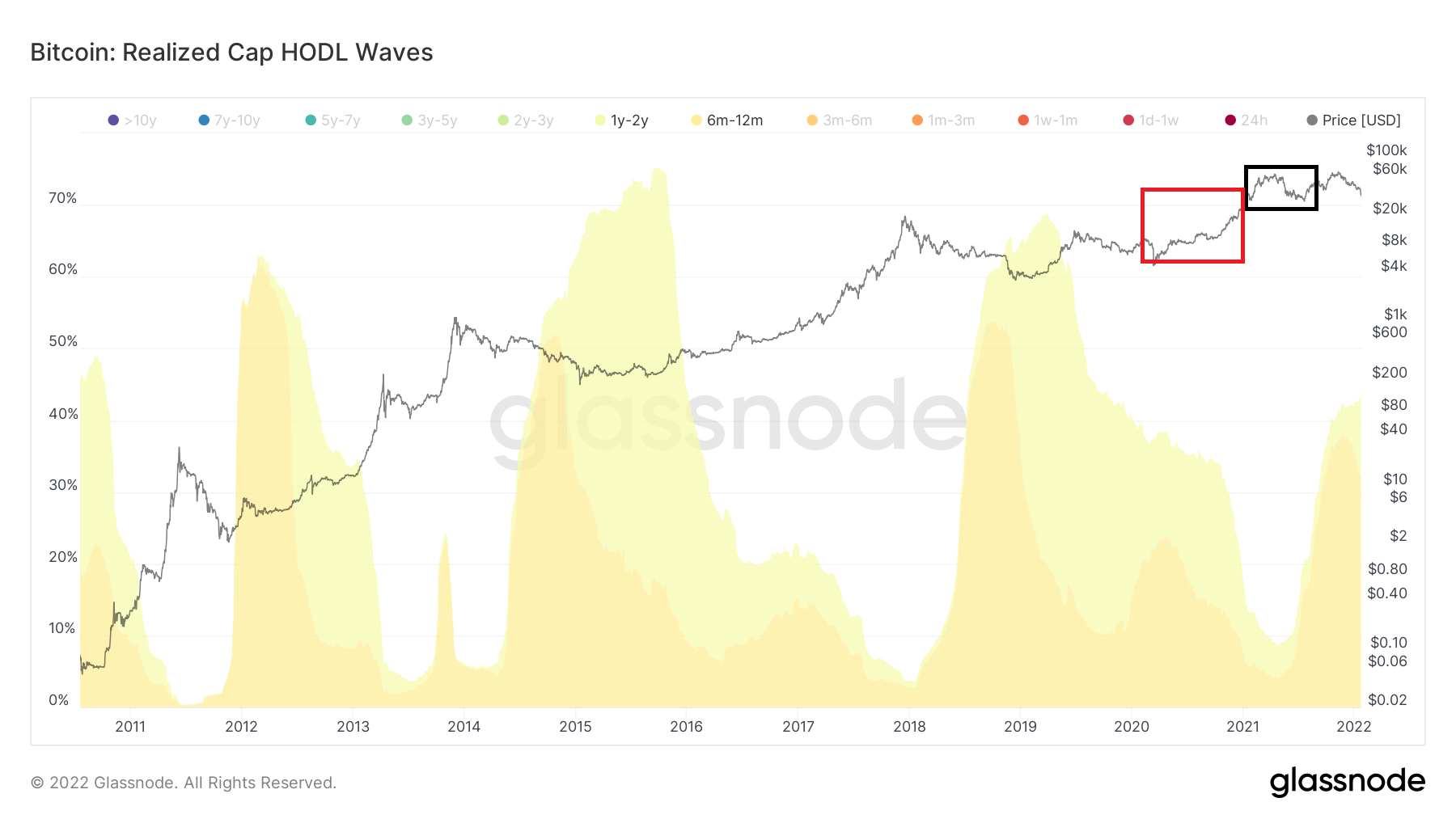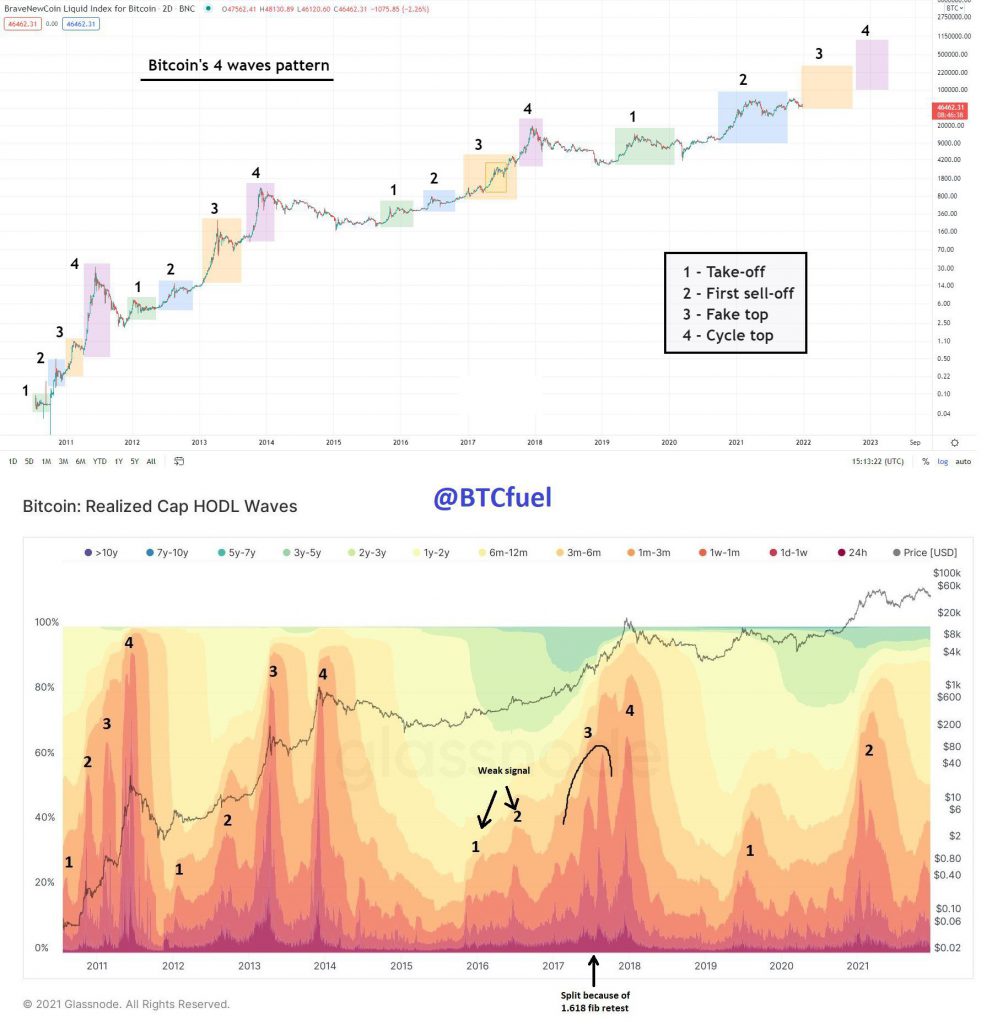BeInCrypto takes a look at Bitcoin (BTC) on-chain indicators, more specifically the HODL wave. This is done in order to determine the percentage of coins held by short-term holders.
What is the HODL wave?
The HODL wave shows the ratio of the BTC that has moved in a specified time period. This is done relative to the total supply of BTC. Therefore, if the HODL wave band of 1-2 years has a range of 15%, it means that 15% of the total BTC supply last moved 1-2 years ago.
BTC enthusiast @BTCfuel tweeted a chart of the HODL wave. It shows a pattern that has been going on since 2011. In it, BTC cycles are comprised of four stages, each with its distinct characteristics.
In this article, we will take a detailed look at the HODL wave indicator and analyze its values.
Short-term movement during the top
What is immediately noticeable when looking at the indicator readings since 2011, is that bands between 1-day and 3 months swell significantly close to market tops.
In 2011, these bands reached a high of 97%. In 2013-2014, they moved above 90% twice. However, in 2017 they only moved above 80%, while they barely moved above 70% in 2021.
What this means is that the majority of the BTC supply has moved within the past three months very close to market cycle tops. It is likely that this occurs as a result of old hands selling into market strength to young hands.
Another observation is the fact that the percentage of total supply that moves as the BTC price approaches a top has been steadily decreasing each market cycle, from 97% in 2011 to 72% in 2021.
Therefore, there are more and more long-term holders (or lost coins) that do not take profit during market cycle tops, rather continue to hold.
Finally, the percentage of coins that have moved over the past three months was only 40% during the current all-time high price of Nov (black circle). This is unlike previous market cycle tops.

Who is holding and who is selling?
The two bands that have increased the most are the 6m-12m (yellow) and the 1-2 year bands (light yellow). Both have been widening since July 2021, when they amounted to 5.11 and 4.23% of the total supply, respectively.
Currently, coins that last moved between 6m-12m represent 32% of the total supply, while those that moved between 1 and two years ago represent 10% of the total supply.
Therefore, 32% of the total BTC supply last moved between Jan – Aug 2021, when the price hovered between $35,000 – $50,000 (black circle). So, coins that were bough inside this period are not being sold at a loss. This is evident by the fact that short-term bands are not swelling.
In addition to this, coins last moved between 1-2 years encompass 10% of the total supply. During this period, the BTC price was between $8,000 – $30,000. Therefore, these holders are still in profit, but have not taken profit during the run-up to the all-time high.
This is a sign that these holders have conviction and have not taken profit during these considerable price swings.
Finally, similarly to how short-term bands swell close to market cycle tops, the swelling of the 6-24 month bands has historically been associated with periods of accumulation.
After the previous market cycle tops, bands up to 24 months held more than 60% of the total BTC supply. What followed afterwards was a significant price rally, in which these holders sold into profit. In turn, this caused a decrease in the bands.

To conclude, when combining these short-and long-term bands, we can arrive at the conclusion that the current composition of short- and long-term holders is more akin to a period of accumulation rather than that of a market cycle top.
For BeInCrypto’s latest Bitcoin (BTC) analysis, click here.
Disclaimer
All the information contained on our website is published in good faith and for general information purposes only. Any action the reader takes upon the information found on our website is strictly at their own risk.


